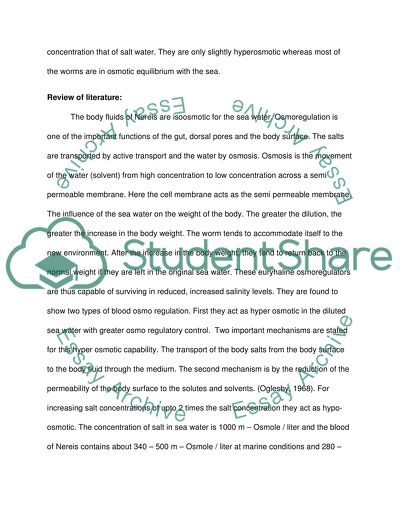Cite this document
(“OSMOREGULATION IN CLAMWORMS Essay Example | Topics and Well Written Essays - 1250 words”, n.d.)
Retrieved de https://studentshare.org/biology/1433950-osmoregulation-in-clamworms
Retrieved de https://studentshare.org/biology/1433950-osmoregulation-in-clamworms
(OSMOREGULATION IN CLAMWORMS Essay Example | Topics and Well Written Essays - 1250 Words)
https://studentshare.org/biology/1433950-osmoregulation-in-clamworms.
https://studentshare.org/biology/1433950-osmoregulation-in-clamworms.
“OSMOREGULATION IN CLAMWORMS Essay Example | Topics and Well Written Essays - 1250 Words”, n.d. https://studentshare.org/biology/1433950-osmoregulation-in-clamworms.


